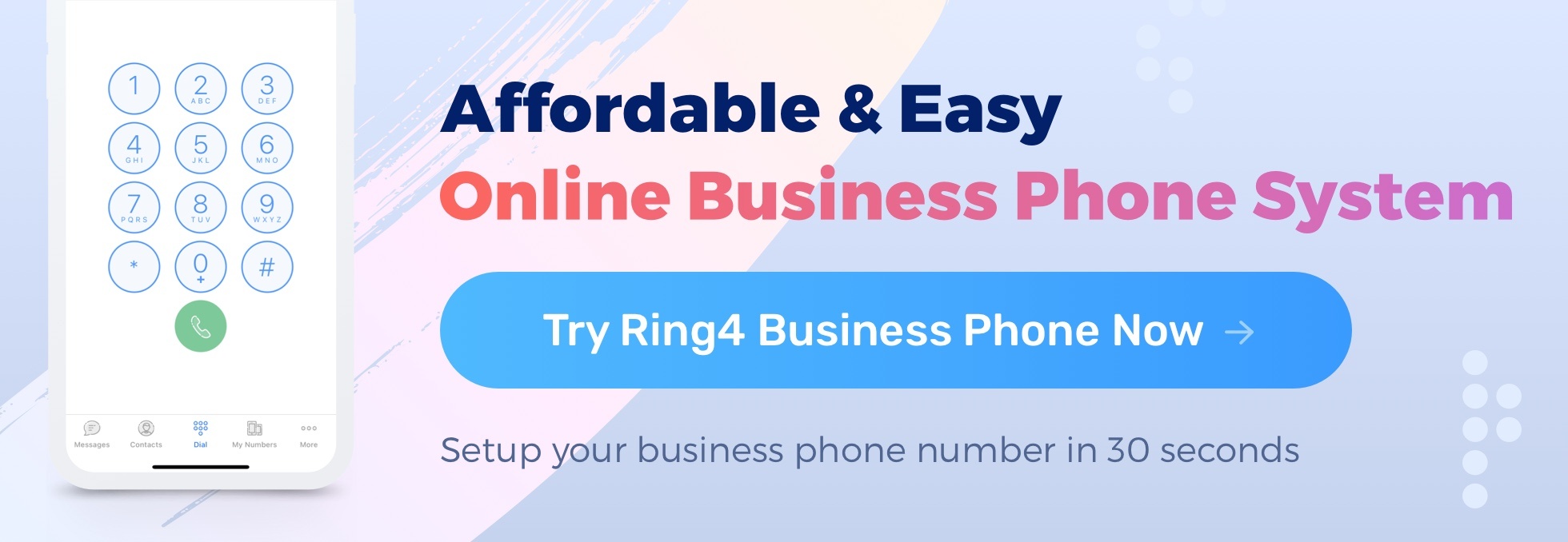Healthcare providers are constantly seeking ways to make their operations more efficient and cost-effective. With the advent of Voice over Internet Protocol (VoIP), hospitals, clinics, and other healthcare facilities can now easily communicate across long distances with minimal expense. VoIP offers a range of advantages which enable remote consultations and diagnoses between healthcare providers, allowing for access to specialties that may not be available locally.
In this post, we’ll explore 10 benefits of VoIP for healthcare organizations. Hopefully, by the time you finish reading, you’ll be inspired to check it out if you’ve been on the fence about VoIP for hospitals and facilities like yours.
The top benefits of VoIP for healthcare organizations are:
- Improved security and privacy
- Increased productivity and efficiency
- Improved patient experience
- Easier call routing and voicemail capabilities
- Reduced costs
- Improved scalability
- Increased mobility
- Real-time data sharing
- Integration with other systems, and
- Enhanced communications.
Now that you know what VoIP for healthcare may be a good idea, let’s dive into these benefits a little deeper!
Improved Security and Privacy
The last thing a patient wants to worry about is their personal data being compromised. Going to the doctor or visiting a healthcare facility of any kind should never be a cause for privacy concerns.
The good news is that VoIP systems are becoming more secure everyday making it that much more difficult for bad actors to get a hold of patient data. With VoIP, all communication is encrypted - and this is critical to keeping confidential patient information private.
What happens if someone were to somehow manage to intercept the call? They won’t be able to understand it. It would come across as a garbled mess rather than an actual conversation! Quality VoIP service providers offer end to end encryption and security protocols that make it difficult for unauthorized individuals to gain access to your system and cause harm. Even SMS messages and other correspondence sent via VoIP are encrypted so you won't have to worry about your health records or financial information falling into the wrong hands.
Increased productivity and efficiency
VoIP for healthcare organizations can translate to streamlined daily operations and more productivity. Here’s just one example where a mobile VoIP phone solution could improve efficiency:
John goes to an urgent care clinic experiencing symptoms consistent with appendicitis. The nurse needs John’s medical records. She could leave the patient’s room, head back to the reception desk and place a call to John’s general practitioner to ask for them to be sent over. If she gets stopped on the way to or from the desk, this could add more minutes to the full amount of time she has to spend with John.
With a VoIP mobile solution, she could step right outside John’s room and place the call immediately. Then, while she completes her preliminary exam, the records are emailed to her smart device. In the amount of time it would have taken her to walk to her desk and back, she sees that John actually has a history of chronic inflammatory bowel disease. Now rather than waste time discussing possibilities of appendicitis, she can treat what is more than likely actually causing his symptoms.
Real-time voice and video communication between staff, patients, and other healthcare professionals enables more efficient patient care while maintaining HIPAA compliance.
Improved patient experience
Patients want to feel like they are being taken care of in a timely manner. The example we shared above would likely result in the patient feeling as though he was top priority. VoIP in conjunction with other systems and processes makes it easier for nurses and doctors to expedite patient care. This means:
- More frequent check-ins on patient progress
- Faster responses to concerns or questions, and
- An increase in overall patient satisfaction
Furthermore, with the help of VoIP solutions, remote monitoring becomes much easier to manage. Because the technology allows for real-time communication between patients and caregivers, telehealth options are more manageable as well. In-person visits can be time consuming and harder to schedule, but with VoIP, remote patient care is a lot more viable.
Easier call routing and voicemail capabilities
For patients and healthcare professionals alike, there’s nothing worse than getting stuck in a call routing loop. VoIP makes it easy to set up call routing rules according to any business’s needs. This can save time and improve efficiency because callers can be directed to the right person who can offer them help without being transferred multiple times.
Additionally, VoIP systems offer advanced voicemail features that traditional phone systems don't provide. For example, transcriptions of voicemails. Imagine being able to copy and paste a message from a patient and send it on to the lab or physician instantly rather than calling and relaying the message verbally. A quick copy and paste and it’s a lot more likely that the message will be delivered as intended to the right person.
Reduced costs
If you’re still wondering if VoIP is right for you, odds are this will be the deciding factor for your organization - cost. This is one area where VoIP for healthcare organizations really shines! It is significantly cheaper to provide all of your staff, nurses, and physicians with a mobile VoIP phone subscription than it is to give them all a second cell phone or set up hardwired phone connections throughout a building. The traditional phone systems tether team members to their desks, whereas a mobile phone app such as Ring4 allows them to use their smartphone as a business phone too.
Improved scalability
Imagine for a moment you need to bring in additional support for patient care. For example, when the COVID-19 pandemic first took hold, healthcare facilities were overrun with patients and not enough support.
The scalability of VoIP systems has opened up new opportunities for healthcare organizations to manage their communication needs. With the ability to easily add or remove users, organizations can quickly adapt to changing circumstances and take advantage of new technologies as they become available. This flexibility is especially important in the healthcare industry, where changes can happen rapidly and patients' needs must be met promptly.
One of the key benefits of VoIP scalability is cost savings. Healthcare organizations can start with a small system and gradually expand it as their needs grow without having to invest in expensive hardware or software upgrades. By being able to add or remove users as needed, healthcare providers can minimize downtime and keep their operations running smoothly. This flexibility also allows them to respond quickly to emergencies or other urgent situations that may require additional staff members.
Increased mobility
We already alluded to this with the fact that VoIP prevents people from being tethered to a desk and makes remote healthcare easier to manage. With the help of VoIP solutions, healthcare professionals have the ability to access patient records remotely. Practitioners can easily view medical histories, test results, and other vital information from their laptops or smartphones. This convenience allows for faster diagnosis times and more informed treatment plans.
Furthermore, VoIP systems make it easy for healthcare providers to communicate with patients in real-time. They can quickly respond to questions or concerns via text message or video chat, without requiring an office visit. This level of accessibility improves patient satisfaction while saving both parties time and money.
Real-time data sharing
Real-time data sharing enhances collaboration between healthcare professionals, resulting in faster decision-making processes that ultimately lead to better outcomes for patients. With VoIP technology, physicians can make informed decisions as they have access to patient information such as lab results, imaging scans, medication histories, and treatment plans. In addition, telemedicine consultations are made possible through VoIP technology which means that patients can receive immediate care even when they are not physically present at a healthcare facility. Implementing this alongside other data-focused solutions such as the charge capture platform, will result in the flow of patient information and cash that is easily manageable for providers of all sizes.
Integration with other systems
VoIP can be integrated with other systems, including patient management systems, making it easier to manage patient information. This integration alone allows doctors and nurses to have quick access to up-to-date patient data. It also enables clinicians to update vital patient information in real-time, which ensures that data is always accurate and accessible by authorized personnel. The result is improved collaboration between departments, more efficient care delivery and better overall outcomes for patients.
Enhanced communications
Enhanced communication is the cornerstone of any successful healthcare experience. With VoIP phone systems, this has become easier than ever before. These systems allow doctors and other healthcare practitioners to communicate with patients in an instant, no matter where they are located at the time.
VoIP systems also allow for enhanced collaboration between healthcare practitioners. This means that doctors can easily share patient information and collaborate on treatment plans, leading to better outcomes for patients overall. Additionally, these systems often come equipped with a range of features designed specifically for use in the medical field.
Patients also benefit greatly from the use of VoIP systems in healthcare settings. They are able to easily connect with their doctor or other healthcare provider at any time, without having to travel to a physical location or wait for an appointment slot.

